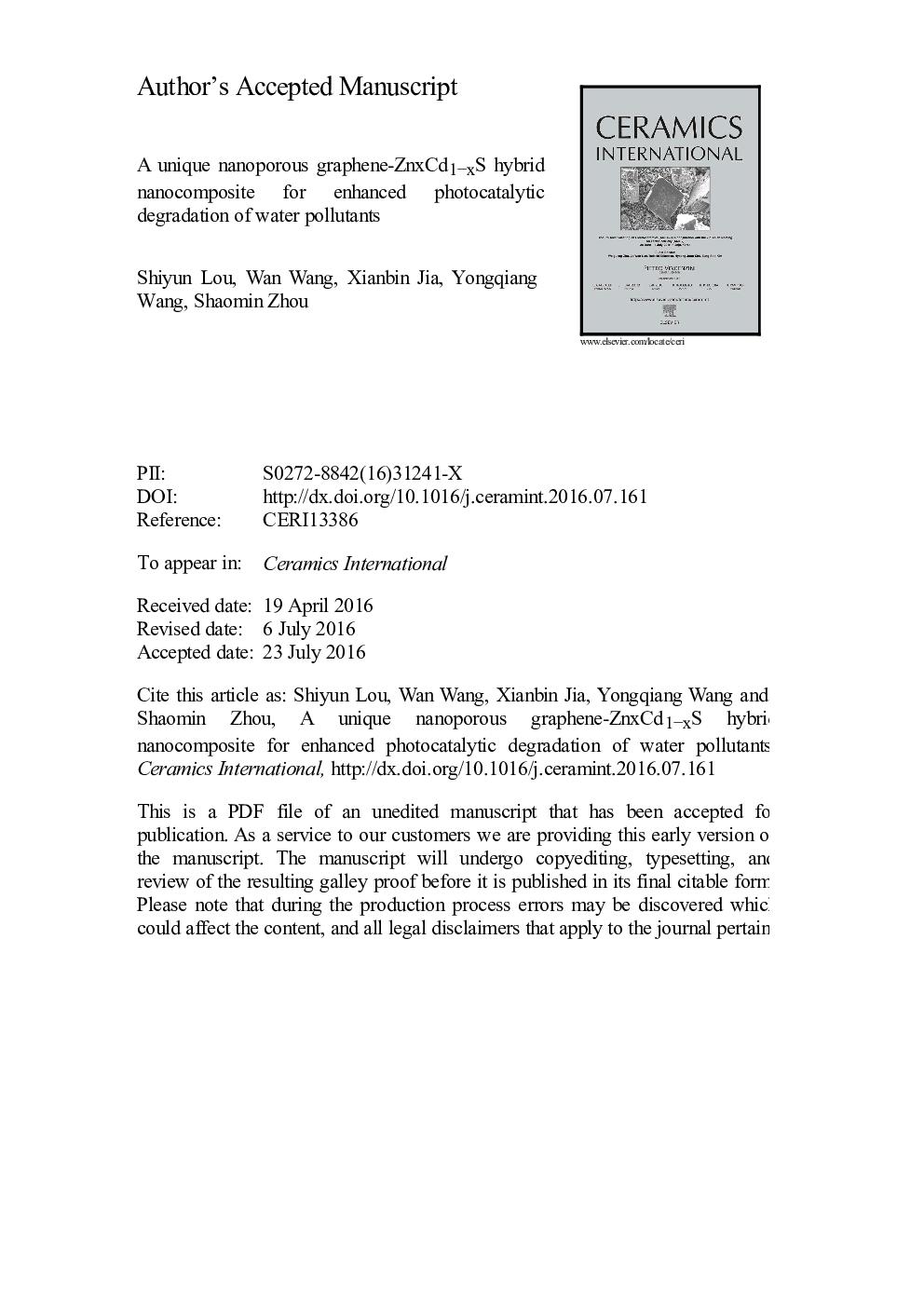| Article ID | Journal | Published Year | Pages | File Type |
|---|---|---|---|---|
| 5438729 | Ceramics International | 2016 | 21 Pages |
Abstract
In this work, a novel in-situ solvothermal reduction route has been made to immobilize nanoporous ZnxCd1âxS aggregates on graphene nanoribbons by using PVP as a stabilizer and thiourea as a sulphur source. The nanoporous ZnxCd1âxS aggregates with diameters of 20-30Â nm assembled from ZnxCd1âxS nanocrystals (3-5Â nm) are homogeneously anchored on graphene nanoribbons and the unique structure of graphene-ZnxCd1âxS nanocomposites has contributed to large specific surface area (102.1Â m2g-1). Despite the analogous size and configuration, the nanoporous graphene-ZnxCd1âxS hybrid nanocomposites exhibited composition-dependent photocatalytic performances for the degradation of methyl orange (MO) under visible light. In particular, graphene-Zn0.5Cd0.5S was capable of nearly completely degrading MO in 150Â min. The excellent photocatalytic activity was proposed to arise from the synergy effect between nanoporous ZnxCd1âxS aggregates and graphene, the suitable band gap, intimate interfacial contact, and unique nanoporous structure. Moreover, the work provides a simple strategy to prepare various nanoporous graphene-semiconductor nanocomposites.
Related Topics
Physical Sciences and Engineering
Materials Science
Ceramics and Composites
Authors
Shiyun Lou, Wan Wang, Xianbin Jia, Yongqiang Wang, Shaomin Zhou,
